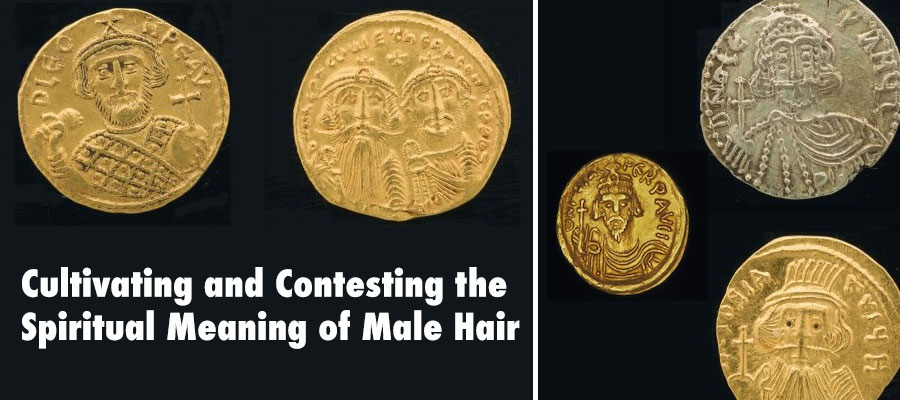Cultivating and Contesting the Spiritual Meaning of Male Hair, special edition of Viator: Medieval and Renaissance Studies
Special edition editors Dawn LaValle Norman (Australian Catholic University) and Lea Niccolai (Cambridge University) are welcoming short article submissions (3,500-5,000 words) for a topical cluster on the religious meanings behind male hair choices for the journal Viator: Medieval and Renaissance Studies.
The connection between hair and the sacred is as pervasive as it is underexplored. Millennia of religious traditions, from across the world, describe and prescribe rites of cutting, shaving, covering, adorning, and dyeing hair.
Hair is the most readily changeable part of bodies. Some of it, especially head hair, is highly visible and confronting; other body hair may be hidden, removed, or seen only by intimates. All hair is freighted with religious meaning. In many cultures, a person’s hair itself, whether its absence or arrangement, and the behaviors that surround it, can be key markers of identity, such as age, gender, sexuality, ethnicity, community, political association, and religious affiliation or piety. The essays in this Cluster challenge scholars to “read” hair across a number of contexts, situating it amongst many potential meanings from internal and external viewers.
We seek papers that investigate, compare, and theorize the intersections between male hair and religion in late antique, medieval, and pre-modern societies. This Viator Cluster thus addresses a gap in scholarship, as much less attention has been paid to male hair, including beards and body hair, in hair studies. For men, how to grow, shave, and groom hair are daily choices that can advertise such affiliations and entwine entire identities and ontologies of belief. We are especially interested in religions beyond Christianity and traditional Greco-Roman cults, and welcome papers focusing on hair in Islam, Judaism, and non-European traditions.
Specific foci for papers might include:
- How do hair and beards acquire religious meaning and what sorts of meaning do they acquire? Are the processes and implications different for different types of hair (beard/facial hair vs head hair or body hair)? How much does context matter when reading hair religiously? What happens to hair when religion itself is contested?
- How does religion shape rituals involving hair (e.g., shaving, adorning, dyeing, powdering, wig-wearing, covering)? When and how do these rituals acquire spiritual dimensions? Are there differences for those who see themselves or are seen as profane vs holy? How do religious considerations intersect with the practicalities and technologies of hair maintenance?
- How does religion shape the treatment of hair that has been removed from the body (e.g., locks of hair cut as mementos, for use in magic, or as relics of the dead)? How is removed hair understood relative to growing hair on the body? Do specific considerations govern it differently from other kinds of bodily excretions?
- What religious arguments underly the different commands to shave or not shave pubic and other body hair? How is this involved in inter-religious self-definitions? How does the rhetoric of body shaving relate to how cultures define sexual difference?
- We are particularly interested in essays that consider the underlying arguments for why hair choices are legislated or encouraged, how such legislation is enacted, how internal justifications bend or shift across cultures, and how arguments about hair intersect gender as a social construct.
Submission between 3,500 and 5,000 words are due 1 September 2024. There will be further time to revise your submission if it is successful. The deadline for the delivery of the final papers is scheduled in February 2025, and publication of the issue (Viator 56, no. 2) for fall 2025.
